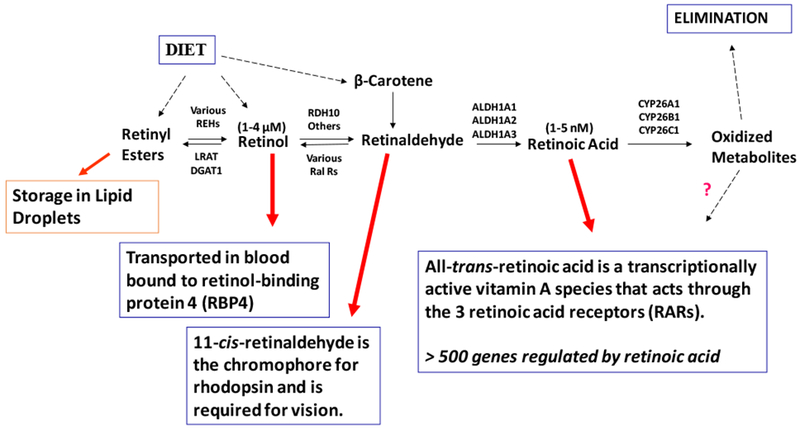Figure 2. Generalized metabolic scheme for the major steps important to vitamin A metabolism.

All vitamin A is derived from the diet either as preformed vitamin A (predominantly retinyl esters and retinol) or as provitamin A carotenoids such as β-carotene. Once internalized, vitamin A (retinol) can be converted to its retinyl ester storage forms primarily through the actions of lecithin:retinol acyltransferase (LRAT), but also in some instances by diacylglycerol acyltransferase 1 (DGAT1). The stored retinyl esters undergo hydrolysis through the actions of a retinyl ester hydrolase (REH). The molecular identities of physiologically important REHs remain to be elucidated. Retinol can be oxidized to retinaldehyde primarily through the actions of retinol dehydrogenase 10 (RDH10), although other enzymes have also been proposed to catalyze this oxidation in vivo. A number of enzymes are able to catalyze the reverse reaction, the reduction of retinaldehyde to retinol. These enzymes are referred to as retinaldehyde reductases (RalRs). Retinol can also be secreted from cells/tissues into the circulation bound to retinol-binding protein 4 (RBP4). The concentration of retinol that is present within the blood is in the low μM range. Retinaldehyde undergoes oxidation to retinoic acid, the vitamin A form needed for transcriptional regulation. Retinoic acid formation is catalyzed by one of three aldehyde dehydrogenase, ALDH1A1, ALDH1A2 or ALDH1A3. The concentration of retinoic acid present in cells and tissues is in the low nM range. Retinoic acid can undergo further oxidative metabolism catalyzed by CYP26A1, CYP26B1 or CYP26C1 forming a number of oxidized products. Although some of these oxidized metabolites have been proposed to have transcriptional modulatory activity, these metabolites are destined predominantly for elimination from the body.
